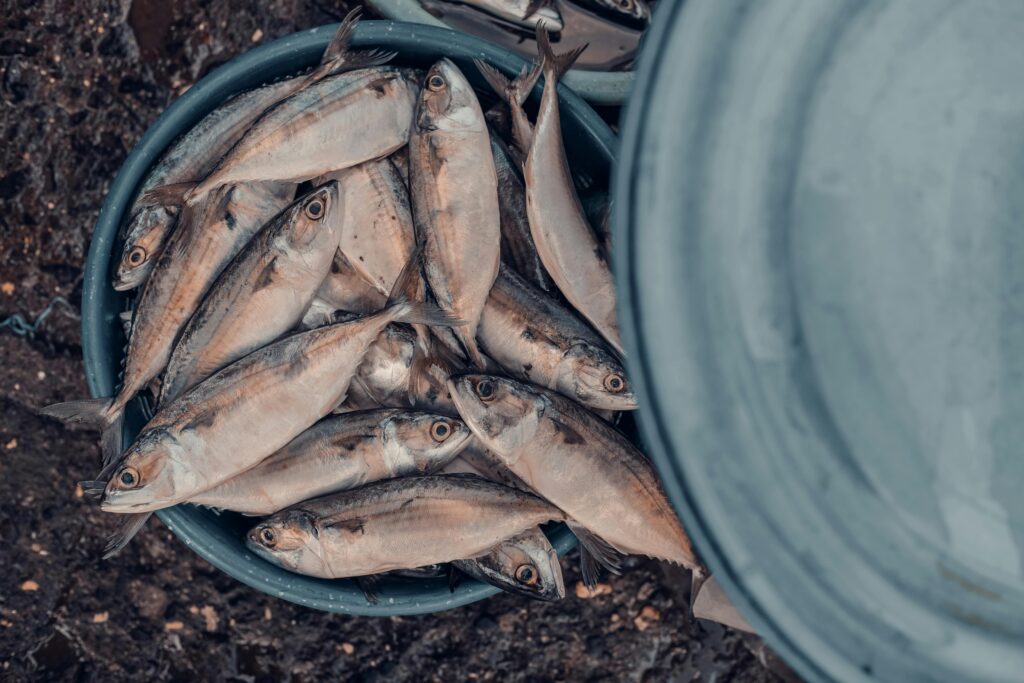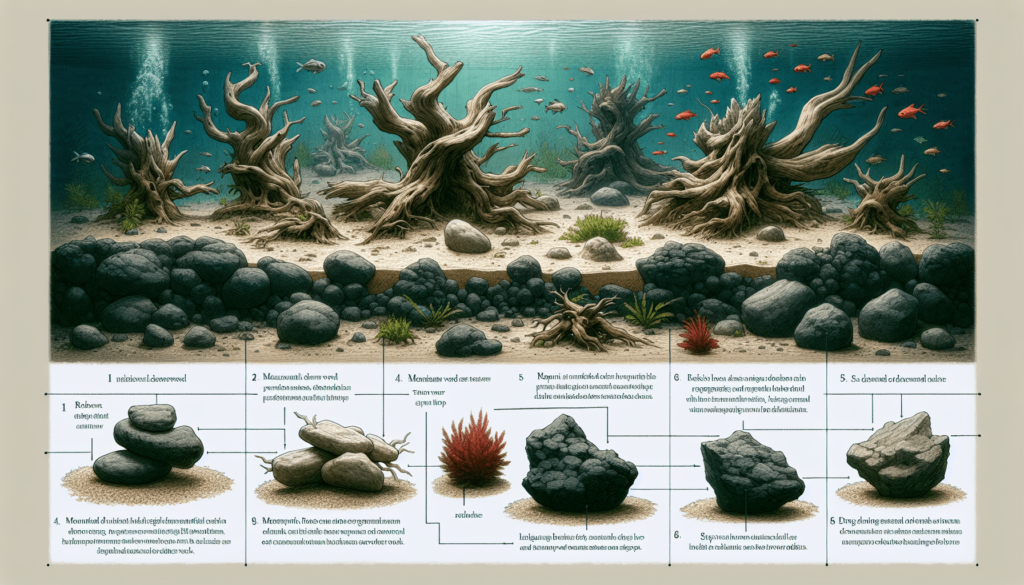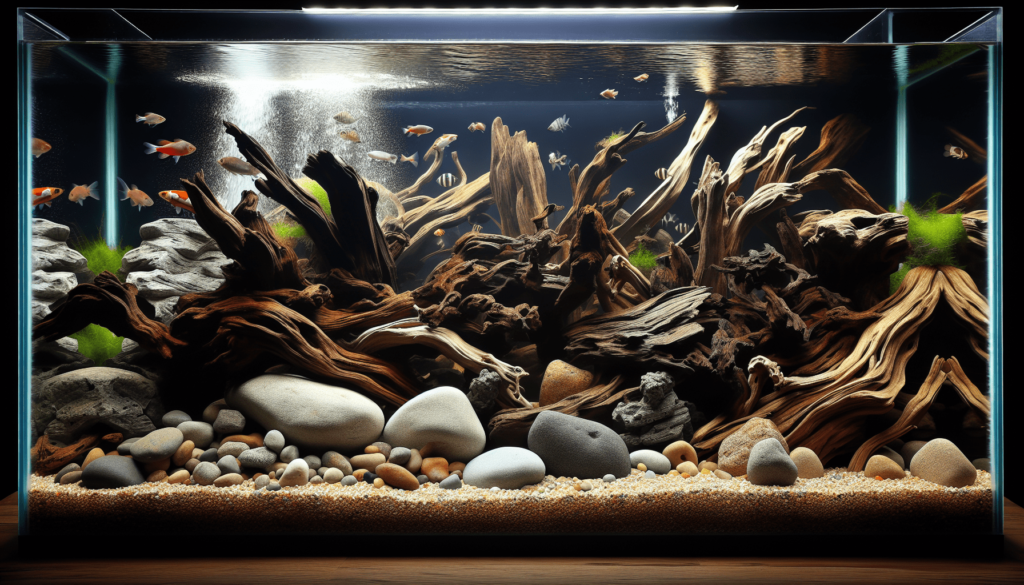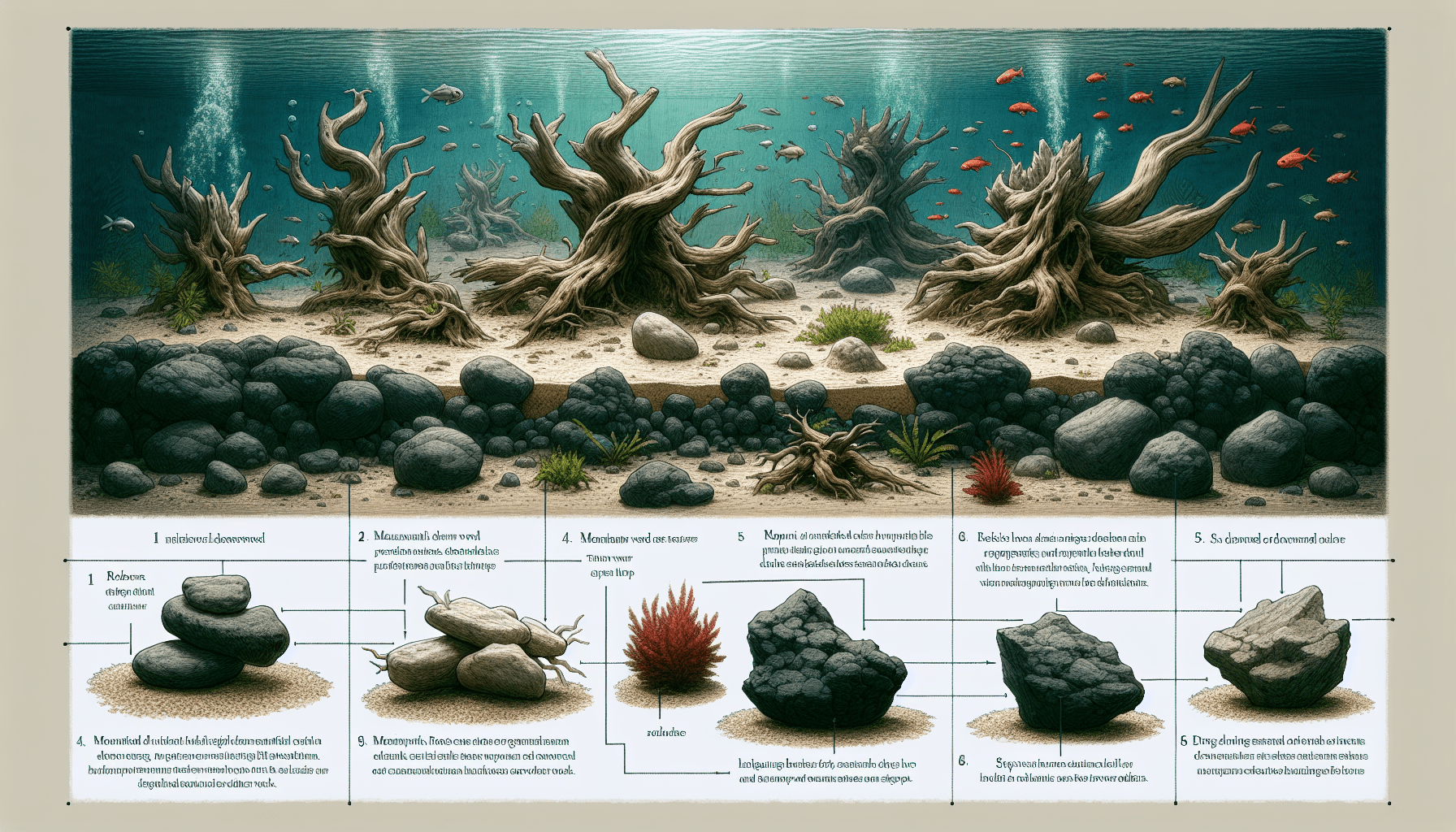Are you looking to create a captivating and visually stunning aquarium? Look no further than “The Ultimate Guide to Aquascaping with Driftwood and Rocks.” In this comprehensive guide, you will discover the art of aquascaping and how to utilize beautiful driftwood and rocks to transform your aquarium into a breathtaking underwater landscape. Whether you are a seasoned aquarist or just starting out, this guide will provide you with invaluable tips and techniques to create a truly unique and mesmerizing aquatic habitat. Get ready to unlock your creativity and embark on a journey to transform your aquarium into a living work of art.

Choosing the Right Driftwood
Driftwood is an essential element in aquascaping, as it adds a natural and rustic touch to your aquarium. When selecting driftwood, it’s important to consider the type, size, shape, and condition.
Types of Driftwood
There are several types of driftwood to choose from, each with its own unique characteristics. Some common types include Mopani wood, Malaysian driftwood, and Spiderwood. Mopani wood is known for its dark color and intricate branching patterns, while Malaysian driftwood features a lighter hue and a smoother texture. Spiderwood, on the other hand, has a unique twisted appearance that adds an interesting visual element to your aquascape.
Size and Shape
The size and shape of the driftwood are crucial factors to consider when selecting the right pieces for your aquarium. Look for driftwood that fits well within the dimensions of your tank, leaving enough space for your aquatic plants and fish. Additionally, consider the shape of the driftwood and how it will contribute to the overall layout of your aquascape. Driftwood with branches and intricate formations can create interesting focal points and provide hiding places for your aquatic inhabitants.
Conditioning the Driftwood
Before adding driftwood to your aquarium, it’s important to condition it properly to ensure it doesn’t negatively impact your water chemistry. Start by soaking the driftwood in a bucket filled with water for several days, changing the water daily. This process will help remove any tannins and organic matter that may leach into the water. After soaking, boil the driftwood for a few minutes to sterilize it further and reduce the risk of introducing harmful bacteria or pests into your tank.
Testing for Suitability
To determine if the driftwood is suitable for your aquarium, perform a simple test. Submerge the driftwood in a separate container filled with water and monitor the water parameters over a few days. Check for any significant changes in pH, hardness, or other water parameters, as these can indicate potential issues with the driftwood. If the water parameters remain stable, you can safely add the driftwood to your aquarium.
Selecting the Perfect Rocks
Just like driftwood, rocks play a crucial role in creating a visually appealing aquascape. They provide structure, texture, and can even influence the water chemistry in your tank. To choose the right rocks for your aquascape, consider their type, size, shape, and compatibility with your desired aquatic plants and fish.
Types of Rocks
There are various types of rocks commonly used in aquascaping, such as lava rock, seiryu stone, and dragon stone. Lava rock is porous and lightweight, making it an excellent choice for planted tanks. Seiryu stone is known for its rugged and jagged appearance, creating a natural mountainous effect. Dragon stone, or Ohko stone, features unique and intricate textures, resembling dragon scales.
Size and Shape
When selecting rocks for your aquascape, consider both the size and shape. Rocks can be used to create focal points, caves, or even entire rocky landscapes. Smaller rocks are ideal for creating intricate details and adding depth to your layout, while larger rocks can serve as visual anchors or larger structures within the aquarium.
Rocks and Water Chemistry
It’s essential to choose rocks that are safe for your aquarium’s water chemistry. Certain rocks, such as limestone or shale, may raise the pH and hardness of the water, which can be detrimental to your aquatic plants and fish. Research the compatibility of rocks with your desired water parameters to ensure a healthy and stable environment for your aquarium inhabitants.
Cleaning the Rocks
Before adding rocks to your aquarium, it’s crucial to clean them thoroughly to remove any dirt, debris, or potential contaminants. Scrub the rocks under running water, using a brush to remove any built-up algae or sediment. Avoid using any soap or chemicals, as they can be harmful to your aquarium’s ecosystem. Once the rocks are clean, let them dry completely before placing them in the aquarium.

Preparing the Aquarium
Preparing the aquarium sets the foundation for a successful aquascape. From determining the layout to selecting the right substrate and adding hardscape elements, each step plays a vital role in creating a visually stunning and balanced underwater landscape.
Determining the Layout
Before setting up your aquarium, take some time to plan the layout. Consider the overall aesthetic you want to achieve and visualize how different elements, such as driftwood, rocks, and plants, will come together in your aquascape. Take into account factors such as focal points, balance, and symmetry to create a visually appealing arrangement.
Adequate Drainage
Proper drainage is crucial for maintaining a healthy aquatic environment. Ensure that your aquarium has adequate drainage by adding a layer of gravel or small stones at the bottom. This layer will prevent the build-up of excess water and promote better water circulation within the substrate.
Substrate Selection
The choice of substrate can greatly impact the growth and health of your aquatic plants. Select a substrate that is specifically designed for planted aquariums, as it provides essential nutrients and supports root development. Gravel, sand, or specialized substrates like aqua soil are popular options, each with their own advantages and aesthetic appeal.
Adding Hardscape Elements
Once the substrate is in place, it’s time to add the hardscape elements, such as driftwood and rocks. Experiment with different arrangements to find the most visually pleasing composition. Consider the size, shape, and color of the hardscape elements and how they interact with the substrate and other elements in your aquascape.

Arranging Driftwood and Rocks
The arrangement of driftwood and rocks is the key to creating a captivating and harmonious aquascape. Strategic placement can draw the viewer’s eye to different parts of the aquarium and provide vital hiding places for fish and other inhabitants.
Creating a Focal Point
A focal point serves as the main visual attraction in your aquascape. Utilize a striking piece of driftwood or a cluster of rocks to create a focal point that captures attention and adds depth to your layout. Place this element off-center for a more dynamic and visually appealing composition.
Considering Balance and Symmetry
Achieving balance and symmetry in your aquascape helps create a sense of order and harmony. Distribute the weight and visual interest of the driftwood and rocks evenly throughout the aquarium. Avoid clustering too many elements in one area or leaving other areas empty to maintain a balanced and visually pleasing composition.
Using Layering Techniques
Layering different sizes of driftwood and rocks adds depth and dimension to your aquascape. Place larger pieces at the back of the tank to create a sense of perspective, with smaller pieces in the foreground. This layering technique mimics natural landscapes and adds a sense of realism to your underwater creation.
Creating Caves and Hiding Places
Driftwood and rocks can be arranged to create caves and hiding places for your fish and invertebrates. These structures provide shelter and security, mimicking their natural habitats. Ensure there are enough gaps and spaces for your aquatic inhabitants to explore and seek refuge.
